Recently Ontarians woke up to this reassuring Amber Alert.
The alert was sent in error—there was no nuclear incident at Pickering, lethal fallout is not even now creeping across the Province, and anyone who went full-bore Panic in the Year Zero is no doubt even now writing apology notes to their surviving neighbours—but it did serve one useful purpose, which was to remind me of that long-ago golden age of nuclear reactor mishap stories.
It may seem a little odd that people were entranced by the possibility of death by nuclear reactor calamity when we are all perfectly comfortable with millions of deaths per year due to fossil fuel pollution, not to mention events like the New London School explosion, the Aberfan disaster, and the Lac-Mégantic rail disaster. The extraordinary catches the imagination when the commonplace doesn’t. Thus far, real-life nuclear disasters have been unusual. It’s the same reason people write novels about giant meteors crashing into the Earth and not about the legions of people who die every year in traffic mishaps. It’s the same reason that murders in affluent or suburban neighborhoods get a lot more attention from the Canadian Press than the disturbing drumbeat of equally gruesome homicides along the Highway of Tears.
Here are five classic tales of Atomic-Powered DOOOM to read as we nervously scan the skies (whilst blithely ignoring the air pollution).
“Blowups Happen” is set in Robert A. Heinlein’s Future History. Rising demand for energy justifies the construction of a cutting-edge nuclear reactor. There is little leeway between normal operation and atomic explodageddon, which puts a lot of pressure on the power plant’s operators. A work environment that requires flawless performances—lest a moment’s inattention blow a state off the map—results in significant mental health challenges for the workforce. How to keep the workers focused on their task without breaking them in the process?
This story dates from what we might think of as the Folsom point era of nuclear energy… No, wait, that’s unfair to Folsom points, which are sophisticated hi-tech, really. This was the era when the atomic version of fire-hardened spear points was still on the drawing board. Hence Heinlein can be forgiven for getting essentially every detail about nuclear power wrong. What wasn’t clear to me was how a power plant composed of pure atomic explodium got licensed in the first place. Perhaps it was because this nonchalant attitude towards safety infuses the whole of the Future History. Just ask Rhysling.
***
I don’t know if Lester del Rey’s Nerves was influenced by “Blowups Happen”. Like the Heinlein story, the tale is set at an atomic facility whose initial licensing implies an astonishing lack of due diligence by public safety officials. Unlike in the Heinlein story, our heroes do not manage to keep all their saucers in the air. Told from the point of view of the facility’s physician, del Rey depicts a gradually escalating crisis. Early signs point to a minor, easily contained fumble. Events spiral out of control. The entire region, perhaps the entire planet is in danger.
Novels like this almost never include the irate public hearings that no doubt follow the mishap, so the reader is denied the hilarity of the responsible bureaucrat trying to explain why the facility was ever built in the first place.
Heinlein at least tried to be plausible; del Rey just invented things on the fly, whenever the plot demanded. Nevertheless, the pacing is well done and the result engaging, as long as you can ignore the fact that the science is pure quill nonsense.
***
In The Prometheus Crisis by Frank M. Robinson and Thomas Scortia, twenty-dollar-a-barrel oil forces America to use the same know-how that gave the world the Mark 14 torpedo and the Ford Pinto.The twelve-thousand-megawatt Cardenas Bay Nuclear Facility— the Prometheus Project—will be the world’s largest nuclear power complex. True, the project has been plagued with endless minor problems, but only General Manager Parks is worried. All his bosses take comfort from the fact that since all the problems have been manageable thus far, all future problems will be as well.
It’s not a spoiler to say that things do not go entirely well. For one thing, the text makes it clear Congress is looking for someone to blame for the Cardenas Bay Incident. For another, the cover has a mushroom cloud on it.
While American light-water reactors have failed to render the West Coast uninhabitable, the novel does paint a very accurate picture of a pathological process found in many real-world disasters, normalization of deviance. Standard safety procedures are ignored, risky shortcuts are taken. When nothing bad happens, the people concerned convince themselves that nothing bad will happen. This works until KABOOM.
***
The U.S. has had nuclear power mishaps from time to time but thus far none of them have forced the evacuation of large urban regions. Science fiction can rewrite history to better suit narrative demands. Thus, in Michael Swanwick’s skillfully crafted In the Drift, the Three Mile Island incident spiraled out of control, raining radioactive debris over the Eastern seaboard. The consequences are explored over several generations. This work was striking enough to earn its author a spot in Terry Carr’s justly well-regarded third Ace Special series.
***
Whereas Americans have been laggard in providing the world with spectacular nuclear power disasters, Russia has done hero’s work in this field. Fred Pohl’s Chernobyl is a fictionalized account of the events leading up to and following events on Saturday 26 April 1986, at the No. 4 nuclear reactor in the Chernobyl Nuclear Power Plant. Thanks in large part to our old friend “normalization of deviance” and a political system that didn’t encourage whistleblowers, the Soviets staged the closest real-life re-enactment of The Prometheus Crisis that we’ve seen thus far. (Second place goes to Fukushima, of course, with the UK Windscale taking the bronze.) Pohl, never a fan of fission reactors, provides an enthralling account of the disaster, which might even be somewhat related to what actually happened.
***
In real life, of course, the odds do not favour dying due to a reactor mishap, any more than they do getting smushed by a space rock, irradiated by a supernova, or buried under volcanic lava. But that doesn’t mean we cannot enjoy reading about unlikely disasters, so feel free to suggest similar works below.
In the words of Wikipedia editor TexasAndroid, prolific book reviewer and perennial Darwin Award nominee James Davis Nicoll is of “questionable notability.” His work has appeared in Publishers Weekly and Romantic Times as well as on his own websites, James Nicoll Reviews and Young People Read Old SFF (where he is assAlsted by editor Karen Lofstrom and web person Adrienne L. Travis). He was a finalist for the 2019 Best Fan Writer Hugo Award, and is surprisingly flammable.










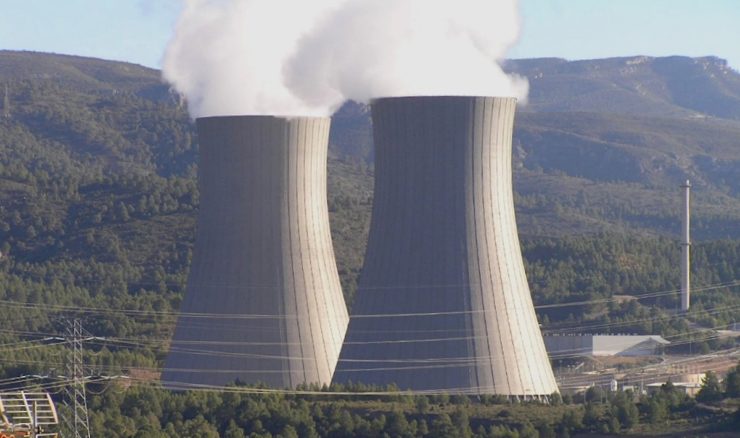
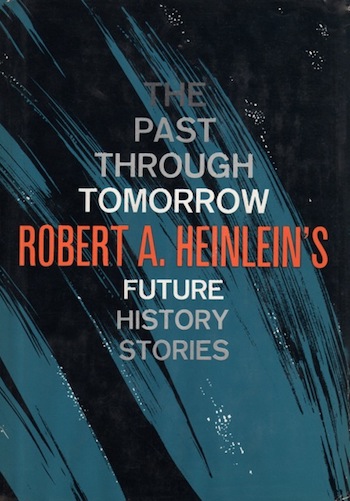
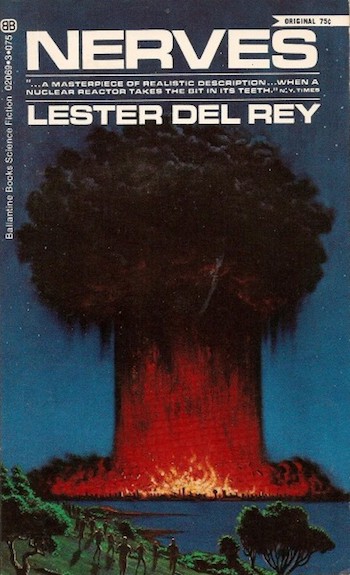
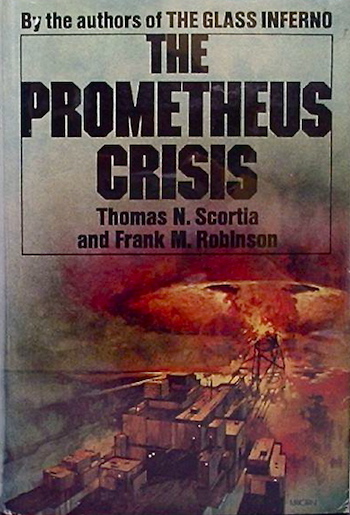
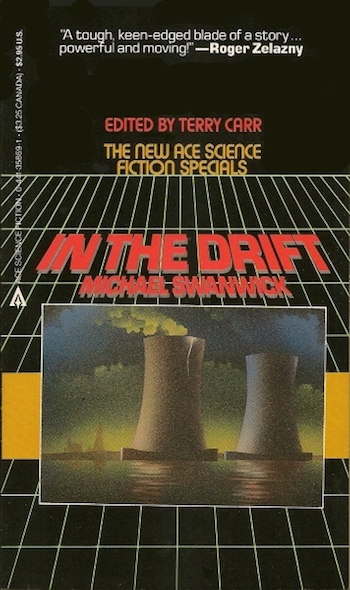
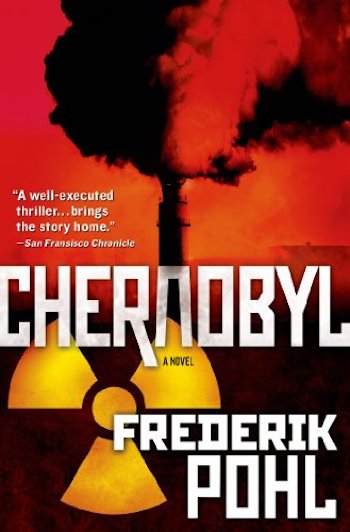
Considering that, for the moment, fission power is the only technology feasible mechanism to produce significant amounts of affordable and reliable electricity without greenhouse gases, it’s too bad there aren’t more stories of nuclear power being boringly safe and efficient.
@1, totally agree!
In an odd way, the Simpsons makes a good case for nuclear power, in that despite having Homer Simpson in an important role, Springfield’s reactor has yet to wipe the town off the face of the planet. “Safe enough that even Homer Simpson can’t kill everyone with it” is pretty safe.
There was a non-nuclear* power plant disaster story in Analog a few decades back – the plant stored energy kinetically in a large mass that circled the inside of the facility. Anyone recall the name of that one?
*Actually the plant might have been nuclear – but the problem was with their energy storage system.
A friend in Canada’s nuclear industry had a _hilarious_ tale of a crew of workers who retrieved a spent fuel rod using an aluminum training sleeve instead of the proper lead sleeve. In their defense, the aluminum sleeve was painted orange with TRAINING ONLY; DO NO USE all over it, so anybody could have made the same mistake. Even though the aluminum provided essentially no protection, they still didn’t get lethal doses, although they all exceeded the mandatory lifetime exposure guidelines over the course of a few seconds.
My father (whose work is still used in reactors) had an amusing work hiccup when he mistakenly interpreted a request to assess the safety of a heavy water plant as a request to assess the safety of a heavy water plant and not a request to reassure whoever that the thing they were going to do regardless was safe. As it turned out, Bill didn’t think the location chosen was a sensible one and said so. Inverhuron still got built, though. The system works!
You can have a lot of fun with superconductors when external factors cause them to stop being superconducting. All the energy that was losslessly zipping around experiences losses, which can manifest as e.g. all of the liquid helium in the apparatus suddenly transitioning from liquid to gaseous form. This is one way to construct fusion reactors that produce a nice boom when they fail, rather than just fizzling.
One interesting thing to me is how both Heinlein and Frank Herbert (the stone burner) have people surviving radiation but going blind. I don’t know the state of radiation research was in the 50s when these stories were written, but from a current perspective, (1) long term chronic radiation exposure causes cataracts but not retinal blindness, (2) any dose large enough to kill your retinas would kill you outright within 30 days due to destruction of your bone marrow (anemia, immune system failure, bleed out due to loss of platelets), but (3) no one really knows what the long term medical issues would be if someone got a lethal dose, but was rescued with a bone marrow transplant. There’s animal research but no good human studies for obvious reasons, maybe blindness could be something that happens long term if you are rescued from the short term effects of a heavy radiation exposure. (They both missed the life-threatening lung disease and respiratory failure that follows 6-18 months if you survive the acute effects of a near-lethal exposure.)
**Future tech is so hard to predict. I believe at one point Clarke or Heinlein has characters using a computing and communication device which is essentially a rolled up keyboard, basically a flexible table computer. But in other stories, astrogation is done by humans doing calculus in their heads and controlling the thrust with a handheld remote. And of course, the spaceships Rhysling was engineer on (if I recall) required the engineer to sit behind a radiation shield with his hand on a wrench that controlled the pile. No one thought about fly-by-wire I guess.
Farmer in the Sky had remote controls for the total conversion plants due to the radiation issue. No robots, though, so if stuff went very wrong the engineer got to go out wrench in hand to certain death. Presumably this would invalidate their health care package.
And of course, in the realm of media there’s the recent HBO miniseries, which is an effective treatment for encephalitis lethargica and other wakefulness-deficit conditions.
While mushroom clouds and elephant feet are vivid images, I’d say what’s really worth losing sleep over is the more personal scale events, from the Demon Core on to Goiânia, the Therac-25, and onward. Reactors advertise their presence by their effect on the skyline; it is harder to know which scrapyard or software ‘engineer’ is plotting your slow demise.
One the survivors of the comet impact got past the initial disaster, a battle to protect and maintain a surviving nuclear reactor drove the plot for a large portion of Niven and Pournelle’s Lucifer’s Hammer. Typical for a Pournelle book, the reactor was a solution, and an asset to be coveted, not a problem.
It only just occurs to me to wonder what all the other reactors on the planet were doing after Hammerfall.
The Making of the Atomic Bomb by Rhodes has several fun real life stories. Like the time that someone noted that the storage method for enriched uranium looked just like the design for a chain-reacting pile, followed by scientists whipping out slide-rules and determining that it wouldn’t actually go critical. And the Dragon Experiment.
@11
The series Life After People on the Hitler, er, History Channel, went into that a bit.
@11: Probably keeping calm and carrying on, not having the misfortune of being on screen in a Niven and Pournelle story.
14: Ah, reminds me of an impressive city in the Cassandra Kresnov series. A hundred million people lived in it, everything seemed to work pretty well, except for one fatal flaw: plot-magnet Cassandra Kresnov chose to live there.
The China Syndrome is a nice bit of 70s nuclear paranoia. Also a great performance by Jack Lemmon.
There was a city in the Soviet Union, I think in the Urals?, that disappeared from the map. It was there in one edition, gone in the next. Based on available evidence, the West concluded there had been a bad nuclear accident. Brain burp as to the city’s name, though.
Kyshtym?
Same oblast as that cool meteor a few years back.
@18: Gesundheit.
Don’t knock the Soviet nuclear industry. The city of Mayak alone can boast, not just Kyshtym, but also Lake Karachay flooding its banks and drying up (not simultaneously), and the non-accident* with the Tetcha River.
Just because the USSR was so modest about its contenders for this prize doesn’t mean they didn’t happen.
* It’s not much of an accident when they do it deliberately.
H. Beam Piper did a story along these lines – “Day of the Moron”, which also involved psychological testing for nuclear workers.
@12 That is one of the greatest science history books I ever read. It is a perfect primer on how science and engineering gets done on a massive scale, a good antidote to the pulp fictional trope of science getting done by a solo madman in the shed behind his house. It is also a cautionary tale on what results when you ignore the costs and consequences of what you are pursuing.
@@.-@: Einstein’s Bridge by John Cramer has a scientist being very enthusiastic about a new energy storage technology which is completely non-polluting and much more efficient than gasoline. Someone else has to point out that it would make a great bomb.
If you want an old-style tale of nuclear accidents that does include the subsequent public inquiry, may I recommend Christopher Hodder-Williams’s 1959 novel Chain Reaction? One of the best, from a possibly unfairly forgotten writer.
Of course, nuclear accidents are extremely rare, due to the skill and professionalism of the people who work with fissile material – as depicted, for example, in David Langford’s novel The Leaky Establishment.
Bob Shaw had a material called Slow Glass, through which light passes very very slowly. The light that emerges does not seem to be notably dim, implying a very high energy density stored within the material. A 1m x 1m square exposed to ten years of dim British sunlight absorbs some fraction of, oh, let’s say 150 gigajoules of energy, about 0.04 kilotons of energy. Even if only 10 percent of the light is not reflected (And nobody ever seems to regard Slow Glass as reflective) that’s a lot of energy in a thin sheet of glass.
Someone works out how to release it all at once. A human is blinded by the flash. I think they should have been incinerated.
@20: If I recall correctly the Mayak plant, quite independent of the fallout Kyshtym incident, was the Russian reactor that dumped so much nuclear waste into the nearby river that a Russian epidemiologist found the cancer rates for people in a nearby town could be calculated via a simple linear relationship from how close to the river they walked in their daily routine. The children whose walk to school and the people whose daily walk to work took them along the riverbank had nearly 100% rate of one or another types of cancer.
Judith Moffett’s The Ragged World has a lovely nuclear failure. Luckily the aliens show up to save the day.
@18 – yes, that’s it. I knew it as Chelyabinsk.
My tired brain thanks you.
@22 The sequel, “The Making of the Hydrogen Bomb” is also excellent, and a great history of Soviet nuclear espionage. With a good example of why you never, ever, reuse your one time pads
@25 I was about to say most of the Slow Glass stories still work if you change the glass so that only a tiny fraction of the light is transmitted – you still get a clear image but not enough energy to be dangerous. But on second thoughts if people are walking around with fifty-year slow glass, you’d have to do some real science to figure out if that works.
My mother was in blood-banking and was attending a related conference in Sydney when the first news about Chernobyl hit. First reports were minimizing the problems as the Russians weren’t being very forthcoming. She said it’s bad, much worse than they’re admitting. She knew because all the world-renown blood disease specialists had disappeared from the conference.
Because of natural radioactivity (note to people who don’t believe in science: there is such a thing. Uranium is a naturally occurring substance), a worker at (if I remember), the Maine Yankee nuclear plant, was forbidden to enter the facility when he set off the radiation detectors.
His well water was heavily contaminated due to the uranium that occurs in the granite that runs in a swath from New Jersey through Maine. This is why buying a house in this area involves getting a radon test, and quite a few houses have special ventilation systems to get rid of the radon build-up in the basements.
I don’t worry about the rare, albeit massive, potential releases from nuclear plants. I worry about the constant low-level releases from coal plants (most coal contains radium) and, because of where I live, the ground.
Check out The Dorset Disaster. I love how it’s fiction written as a factual account, with photos and maps and charts.
I do hope that people like Swampyankee will realize that having differing opinions or interpretations of evidence doesn’t always equal “not believing.”
Early research into the results of atomic radiation involved ordering unsuspecting soldiers to stand too close to a bomb blast. Then finding out what happened to them. I’ve seen movies of such research.
In the early 1970s a friend in a position to know talked about one proposed design for an atomic plant. An early draft placed the damping rods underneath the action. In an emergency they had to be pushed up into the atomic pile.
Someone pointed out how stupid that was. So they went with the KISS principle. They had damper rods above the pile, hung from ropes. There was always a Nuclear Emergency Preparedness Damper Rod Axe Man on watch. It was his job, if the balloon went up, to cut the ropes and drop the rods.
It is unfortunate how potentially beneficial (and profitable) technologies can be stigmatized. Writer BT James pointed out where nuclear energy has actually worked, while sharing some personal recollections, in his FB piece noting the 50th anniversary of the TMI incident:
https://www.facebook.com/btjwingedlion/posts/1487336828063487?__tn__=K-R